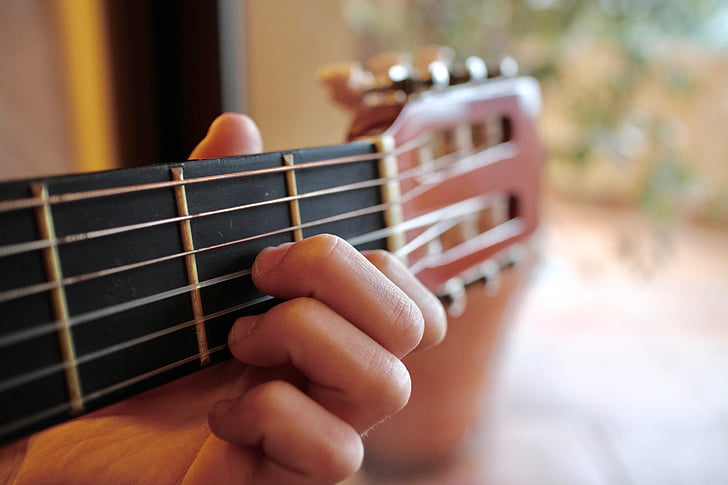If you’ve ever found yourself pondering why are guitar chords upside down, you’re not alone. This seemingly counterintuitive aspect of guitar playing has puzzled many, from beginners to those with some experience. In this article, we’ll demystify this topic and give you a clear understanding of why guitar chords are often displayed this way.

Understanding The Basics of Guitar Chords
First and foremost, let’s delve into what a guitar chord really is. A guitar chord comprises a set of notes played together at the same time on the guitar. But why is this a foundational concept? Because understanding chords is essential for playing songs, improvising, and even composing your own music.
Each chord has a unique sound and feeling, adding emotional texture to the melody. When you strum or pluck the strings in a specific arrangement, you create a harmony that gives depth to the music you’re playing.
Why Are Guitar Chords Upside Down?
Now, let’s dive into the reason behind this puzzle…
Why It Seems Like Chords Are Upside Down
Have you ever glanced at a guitar chord diagram and wondered why it looks inverted? If so, you’re not alone. This presentation can be disorienting at first glance. But rest assured, there’s a reasonable explanation for this. When you’re playing the guitar, your viewpoint of the fretboard is different than someone watching you play.
The chord diagrams are designed to replicate the viewpoint you have when you look down at the fretboard during playing. It may seem counterintuitive at first, but this orientation is designed to aid in the learning process, making it simpler for you to match your fingers to the correct frets and strings.
Read more guitar topics here – Guitar Questions: Get the Right Answers to Your Burning Questions
Orientation: Mirror Vs Reality
So, you may wonder, why do guitar chords look upside down on a sheet of paper but seem just fine when you’re actually holding your guitar? The answer lies in perspective and orientation. Think of the chord diagram as a mirror reflection of your own viewpoint when you’re engrossed in playing.
When you look down, you see the fretboard from a specific angle, and the chord diagram aims to replicate this angle. This design choice helps in bridging the gap between reading a chord and actually playing it, making it easier for you to get your finger positioning correct.
How to Read Chords Correctly
Once you’ve understood the reason behind the upside-down appearance of guitar chords, it’s time to focus on deciphering chord diagrams so you can start playing. Chord diagrams serve as your roadmap to mastering guitar chords.
They are graphical representations designed to guide you through the maze of strings and frets, providing a simplified yet precise overview of what you need to do to produce the desired chord sound.
The Anatomy of a Chord Diagram
At first glance, a chord diagram looks like a grid. This grid consists of vertical and horizontal lines that intersect each other. Let’s break down what these lines mean:
Vertical Lines: These lines stand for the six strings of your guitar. The string farthest to your left is typically the low E string, while the one farthest to the right is the high E string. Imagine holding your guitar in playing position and looking down; this vertical orientation should match what you see.
Horizontal Lines: These represent the frets on your guitar, starting with the fret closest to the headstock at the top. Each line indicates a different fret where you might place your fingers to produce various notes.
Understanding Fret Markers and Finger Positions
Chord diagrams also feature dots or other markers on this grid. These markers are perhaps the most critical elements of the diagram:
Dots: These are placed at the intersections between vertical and horizontal lines. A dot tells you where to place a specific finger on a particular string and fret. Sometimes, the diagrams may include numbers inside these dots, indicating which finger you should use: index (1), middle (2), ring (3), or pinkie (4).
Ensuring Correct Sound and Hand Posture
Following the diagram’s guidance ensures not only that you hit the correct notes but also that your hand posture is conducive to smooth transitions between chords.
The chord’s intended sound relies heavily on your fingers being in the right positions, pressing down firmly enough to avoid muted or buzzing strings, and being arched correctly to avoid touching adjacent strings unnecessarily.
Conclusion: It’s All About Perspective
So, why are guitar chords upside down? The answer is surprisingly simple: it’s a matter of perspective. Understanding this can help remove some of the initial hurdles you may face when learning how to play the guitar. With this newfound knowledge, you’ll find it easier to interpret chord diagrams and become a more proficient guitarist.